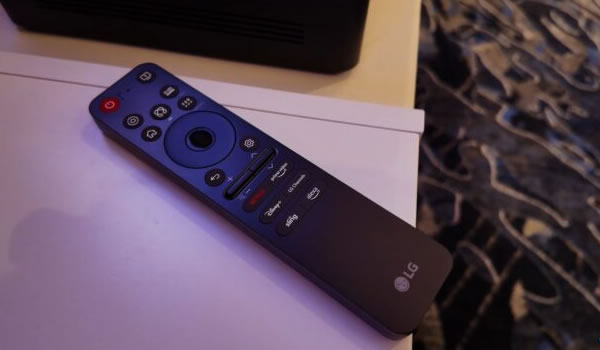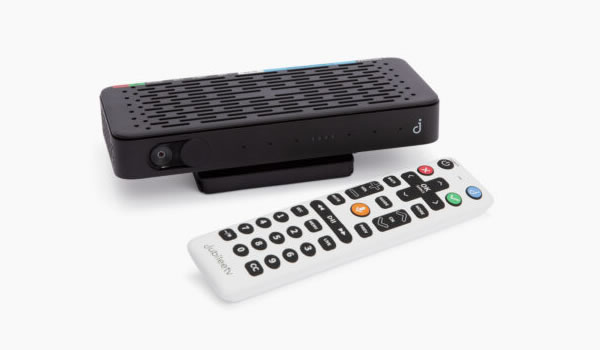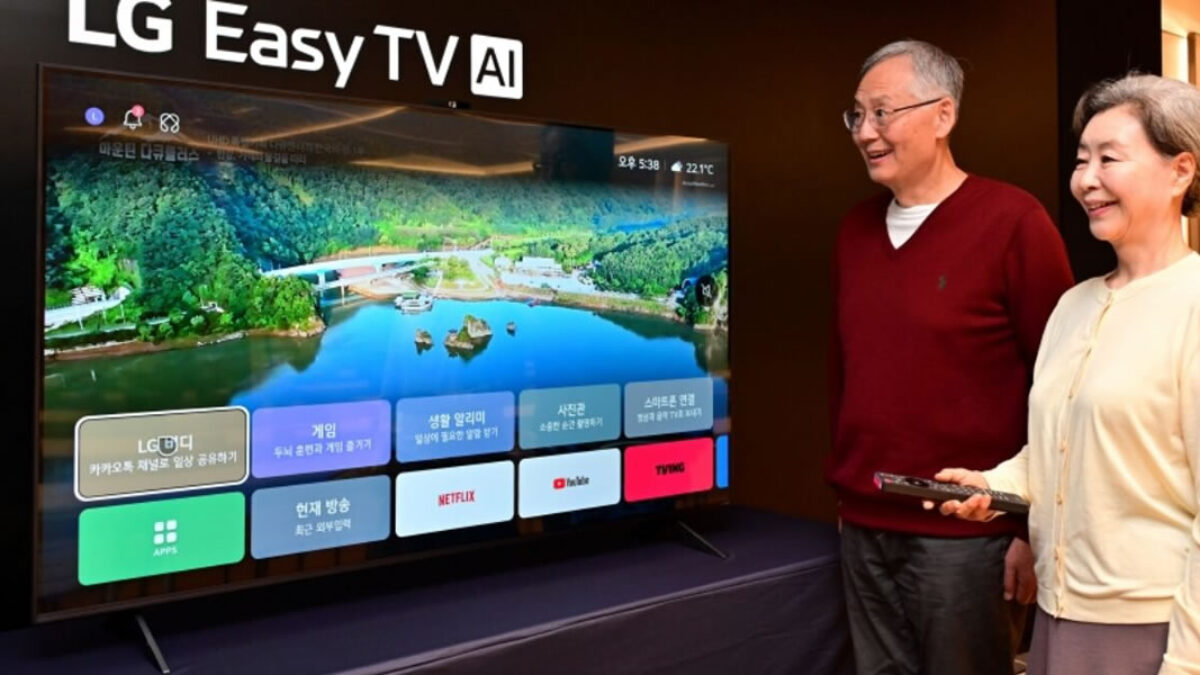LG is seeking to develop a new marketplace, creating televisions for elderly citizens. However, I believe that the solution for a television truly addressing the needs of older individuals remains much simpler and less expensive.
Announcement of Easy TV
On Thursday, LG revealed the Easy TV in South Korea, aiming it at the senior television audience, according to a Google translation of the announcement. One of the elements that LG has integrated into its efforts to attract this demographic is a controller with numerals. Many remotes for smart televisions, streaming devices, and boxes lack numbered keys, with much of the controller area allocated to other functions.
Remote Control Design
LG launched a new version of its Magic Remote in January with an especially limited button selection that is likely to confuse or irritate newcomers. In addition to omitting keys for separate numbers, there are no switches for changing sources, playing or pausing, or fast forwarding and rewinding.
Features of the Easy TV Remote
The Easy TV’s remote contains all these controls, plus mute, zoom, and larger labels. The translated release also emphasizes a button resembling “back” and states that seniors can press it to quickly return to the previous broadcast.
Stay up to date with the latest technology in TheTechCrunch.info, which covers artificial intelligence, mobile and web apps, modern things, cyber security, and general technical news. From AI’s successes to chat and generative tools, such as smartphones, laptops, and wearables’ special reviews, TheTechCrunch gives an insight into this case.

The company presented it as a way for viewers to resume what they were watching after something unplanned happens, such as an application starting accidentally or a screen turning dark after another device connects to the television.
Familiar Buttons and Operating System
You will also find the same category of controls that you generally see with modern smart television remotes today, including buttons for launching specific streaming platforms. Beyond the controller, LG modified its operating system for televisions, webOS, to emphasize five senior-oriented functions and favorite applications, and to use a larger typeface, the translated statement mentioned.
Senior-Tailored Capabilities
Some Easy TV elements resemble those present on LG’s other televisions but are customized to situations that LG believes older people value. For example, LG claims seniors can use a reminder option for medication notices, establish integrated video calling to promptly connect with family members who can assist with television issues or emergencies, and play built-in activities designed for brain wellness.
Picture and Audio Adjustments
To create the Easy TV, LG said it adapted its LG QNED Evo QNED85A and modified it to make the image brighter and more vivid and to strengthen sound for dialogue.
Pricing
Currently, the 65-inch QNED85A carries an MSRP of 2,590,000 won (about $1,837) in South Korea and $900 in the United States. The 75-inch edition is unavailable from LG’s South Korean store, but it would be priced similarly above the United States MSRP of $1,150. The Easy TV costs 2,769,000 won (about $1,964) for 65 inches and 3,869,000 won (about $2,744) for 75 inches.
The Idea of a Television for Senior Citizens
LG is hoping to stimulate a marketplace of televisions for older citizens. In the United States, JubileeTV attempts to appeal to seniors and their families by providing a device that permits easy access from a remote location through a dedicated mobile application. The concept is to make it simpler for more technologically adept relatives to troubleshoot and handle additional tasks, such as setting reminders.
Differences and Assumptions
JubileeTV differs from Easy TV in allowing seniors to choose their own television. However, both devices assume that individuals who are 65 and above have trouble managing modern televisions. LG TV’s conclusion is based on “over 70 percent of television-related questions from older customers received at its service centers being about difficulties operating the television,” per its translated declaration.
Seniors and Modern Technology
While some elderly individuals face limitations, including motivation, time, budget, or health, that restrict them from adopting new technology, tech has become so embedded in society that numerous senior technologists and even more older adults purchase and use all kinds of current gadgets, from tablets to smart home equipment.
Universal Appeal of Simpler Features
That is not to suggest that offering an easier-to-read webOS home screen and a more functional, legible controller is not welcomed. But those are aspects that individuals of any age could appreciate. You do not have to be retired to want a television that shows what you want to watch immediately, instead of unnecessary bonus capabilities and advertising.
AI Button and Simplicity
Further complicating Easy TV’s supposed identity is a dedicated AI button on the controller. It appears improbable that someone requiring their television to provide nearly instant support also needs an AI button.
Dumb TVs as an Alternative
If manufacturers truly want to make televisions appear simpler and more recognizable to older groups, they should distribute more basic televisions. Seniors are definitely streaming, but they are also the largest remaining group of broadcast watchers. In the United States, 64 percent of Americans aged 65 and older maintain a cable or satellite subscription, according to Pew Research.
Benefits of Basic Televisions
Older citizens used basic televisions for decades. Televisions not connected to the Internet can still access streaming through simple approaches like streaming devices or attaching a computer. With a basic television, you do not need to learn software that differs across television brands, think about updates, or worry about privacy.
Explore a complete hub for the latest apps, smart things, and security updates online, ranging from AI-operated solutions and automation tools. TheTechCrunch.info offers in-depth articles, comparisons, and specialist analysis designed to understand the rapidly changing technology. Whether you are keen on robotics, data protection, or the latest digital trends.

Smart televisions introduced concerns about surveillance that today’s older viewers lived without for years. Basic televisions could help protect the less informed without requiring them to interpret lengthy terms in tiny writing.
Affordability and Accessibility
A basic television would be cheaper, too, which would assist seniors with fixed incomes. Instead, LG is presenting an expensive, large-screen smart television with built-in software that it can monetize. Yet another direction that a television for seniors could take, which does not seem common with the Easy TV, is focusing on accessibility features that are straightforward to activate.
Market Potential
That said, many of these attributes could appeal to adults under 65. However, televisions aimed at seniors could be profitable for companies like LG. The Seoul-headquartered firm’s translated announcement notes that the number of people aged 65 years.
And older people exceeded 10 million at the end of last year, representing 20 percent of the entire registered population in South Korea, according to data from the Ministry of the Interior and Safety of South Korea. LG sees televisions for seniors as another potential developing category, similar to its StanByMe line of massive tablets on wheels.
Conclusion
Seniors could gain more from televisions with recognizable interfaces, affordability, and privacy than from a mildly altered television with a surcharge. However, with the revenue produced through television software advertising and tracking, those attributes are losing importance for manufacturers.


